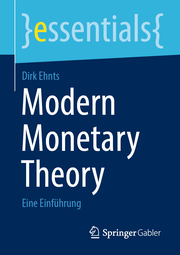Current Issues in the Economics of Water Resource Management
Theory, Applications and Policies, Economy & Environment 23
Bibliografische Daten
ISBN: 9781402005428
Sprache: Englisch
Umfang: x, 234 S.
gebundenes Buch
Erschienen am
30.04.2002
Themenwelten
- Belletristik & Lyrik
- Krimi
- Kinder- und Jugendbuch
- Bilderbücher
- Familie
- E-Reader
- Hörbuch für Erwachsene
- Hörbuch für Kinder
- Reise
- Landkarten & Stadtpläne
- Kalender
- Politik & Wirtschaft
- Gesundheit
- Demenz
- Kochen
- Natur & Tiere
- Regionalia
- Körper und Seele
- Hobby & Basteln
- Humor & Nettigkeiten
- Geschichte & Kultur
- Schulbuch
- Lernhilfen
- Pädagogik
- Psychologie
- Partnerschaft & Erotik
- Fremdsprachige Literatur
- Theologie & Philosophie
- Fantasy & SciFi
- Lifestyle
- New Adult
- Influencer & Blogger
- Graphic Novel
- Manga
- Tickets
- Sprachen
- Biographien
- Sport
- Wissen
- Recht
- Beruf & Karriere
- EDV
- Fahrzeuge
gebundenes Buch
Lieferbar innerhalb 2- 3 - Wochen (soweit beim Lieferanten verfügbar)
Beschreibung
The marginal price elasticities estimated by Martinez-Espineira conforms to expectation. The price specification that accounts for the changing proportion of water users in each block yields a higher elasticity (-0. 47) compared to the spec ification ignoring this feature of the data. However, this difference is not found to be statistically significant, a result attributed to the low power of the test (small sample size limiting the accuracy of estimates). In conclusion, the paper provides a theoretically correct price specification for demand functions under block pricing and aggregate data. The empirical findings in the paper, however, are not conclusive and further empirical work using more data and alternative (nonlinear) demand functions, is needed to show the practical implications of the arguments put forward by the Martinez-Espineira's paper. Static empirical consumer demand functions estimated with aggregate data are well known to suffer form serial correlation and other statistical problems asso ciated with misspecified dynamics. These dynamics arise because consumers do not react immediately to a change in prices due to their largely predetermined lifestyle. In the case of demand for water, for example, current purchases can be largely predetermined due to commitments arising from past purchases such as swimming pools, bathtubs, dishwashing machines, etc. Muellbauer and Pashardes (1992) show that the autoregressive nature of consumer demand data can be cap tured in a theoretically consistent manner by incorporating intertemporal aspects of consumer behaviour in the model through habit formation and durability.
Auf die Wunschliste
106,99 € inkl. MwSt.
Autorenportrait
InhaltsangabeAcknowledgements. List of Contributors. Part 1: Introduction. Current Issues in the Economics of Water Resource Management: Introduction; P. Pashardes, et al. Part 2: Demand for Water. 2.1. Residential Demand for Water. Estimating Water Demand under Increasing-Block Tariffs Using Aggregate Data and Proportions of users per Block; R. Martínez-Espiñeira. Long-Run Study of Residential Water Consumption; C. Nauges, A. Thomas. 2.2. Irrigation Water Demand. Evaluating Irrigation Water Demand; C. Bontemps, S. Couture. Hedonic Price Analysis and Selectivity Bias: Water Salinity and Demand for Land; P. Koundouri, P. Pashardes. Part 3: Water Efficiency. 3.1. Measurement of Water Efficiency. Measuring Irrigation Water Efficiency with a Stochastic Production Frontier: An Application to Greek Out-Of-Season Vegetable Cultivation; G. Karagiannis, et al. 3.2. Efficient Use and Management of Water. Strategic Behavior and Efficiency in the Common Property Extraction of Groundwater; S.J. Rubio, B. Casino. Demand-Side Technology Standards under Inefficient Pricing Regimes: Are They Effective Water Conservation Tools in the Long-Run? C. Timmins. Part 4: Water Management Policies. 4.1. Water as Multifaceted Resource - Horizontal Management Considerations. Joint Quantity/Quality Management of Groundwater; C.R. Palma. Missing Markets and Redundant Reservoirs: Dams as a Consequence of Inefficient Groundwater Management Policies; B. Groom, T. Swanson. 4.2. Water as an Industrial Management Problem - Vertical Considerations. Regulation of Public Utilities under Asymmetric Information: The Case of Municipal Water Supply in France; S. Garcia, A. Thomas.4.3. Water Policy and Water Practice - Second Best. Policy Instruments for Groundwater Management for Agriculture and Nature in the Netherlands; P.J.G.J. Hellegers, E.C. van Ierland.
Inhalt
Acknowledgements. List of Contributors. Part 1: Introduction. Current Issues in the Economics of Water Resource Management: Introduction; P. Pashardes, et al. Part 2: Demand for Water. 2.1. Residential Demand for Water. Estimating Water Demand under Increasing-Block Tariffs Using Aggregate Data and Proportions of users per Block; R. MartÃnez-Espiñeira. Long-Run Study of Residential Water Consumption; C. Nauges, A. Thomas. 2.2. Irrigation Water Demand. Evaluating Irrigation Water Demand; C. Bontemps, S. Couture. Hedonic Price Analysis and Selectivity Bias: Water Salinity and Demand for Land; P. Koundouri, P. Pashardes. Part 3: Water Efficiency. 3.1. Measurement of Water Efficiency. Measuring Irrigation Water Efficiency with a Stochastic Production Frontier: An Application to Greek Out-Of-Season Vegetable Cultivation; G. Karagiannis, et al. 3.2. Efficient Use and Management of Water. Strategic Behavior and Efficiency in the Common Property Extraction of Groundwater; S.J. Rubio, B. Casino. Demand-Side Technology Standards under Inefficient Pricing Regimes: Are They Effective Water Conservation Tools in the Long-Run? C. Timmins. Part 4: Water Management Policies. 4.1. Water as Multifaceted Resource - Horizontal Management Considerations. Joint Quantity/Quality Management of Groundwater; C.R. Palma. Missing Markets and Redundant Reservoirs: Dams as a Consequence of Inefficient Groundwater Management Policies; B. Groom, T. Swanson. 4.2. Water as an Industrial Management Problem - Vertical Considerations. Regulation of Public Utilities under Asymmetric Information: The Case of Municipal Water Supply in France; S. Garcia, A. Thomas. 4.3. Water Policy and Water Practice - Second Best. Policy Instruments for Groundwater Management for Agriculture and Nature in the Netherlands; P.J.G.J. Hellegers, E.C. van Ierland. 














